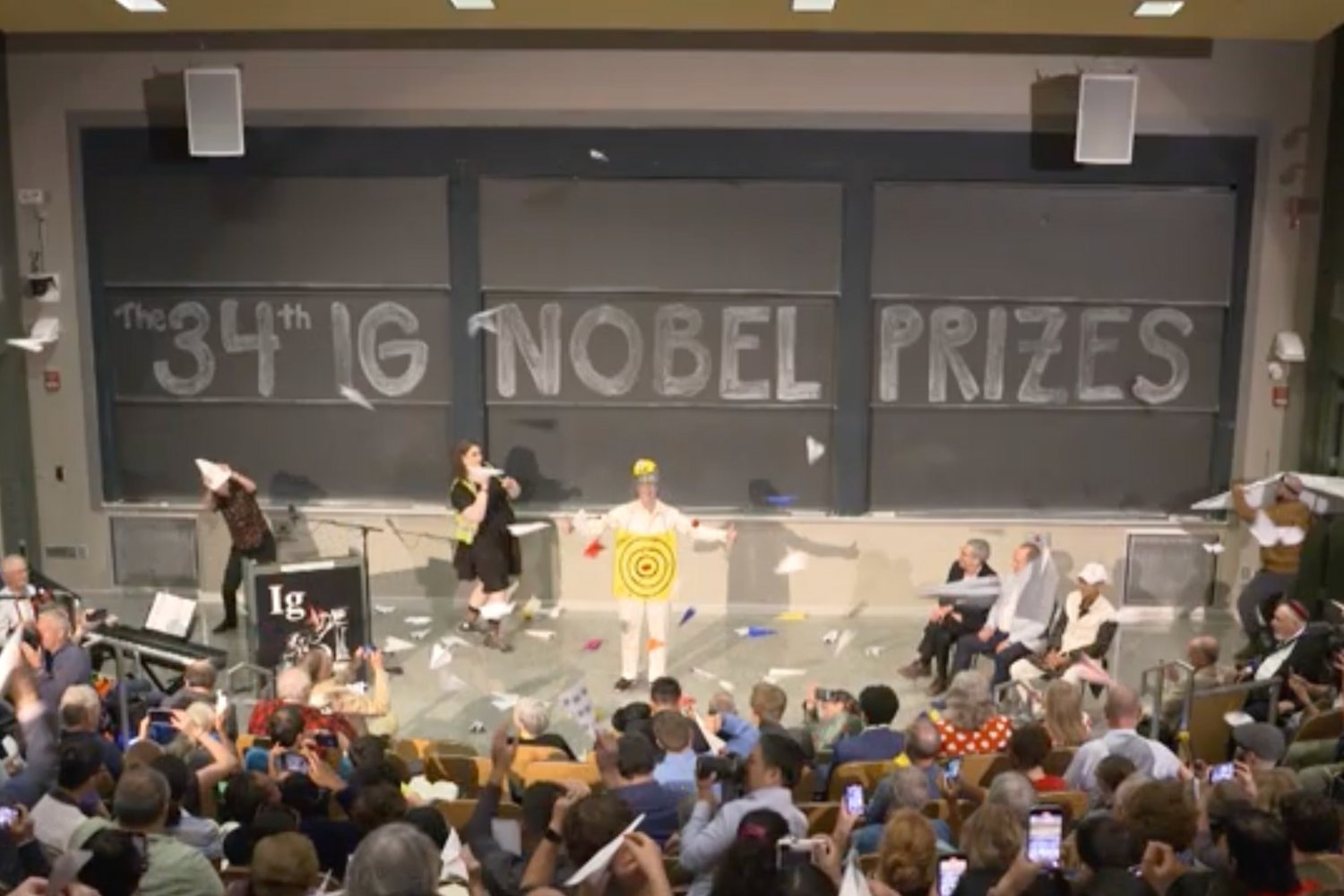Whatever can go wrong, will go wrong. That’s Murphy’s Law. It was also the theme of the 34th Ig Nobel Prizes, the annual ceremony which awards all kinds of wacky research from across the scientific fields. Needless to say the ceremony was a complete success.
This year’s 10 prizes were produced by the Annals of Improbable Research magazine and awarded by actual Nobel laureates. If you’re looking for those awards, the winners of the 2024 Nobel Prizes will be announced Monday, October 7 through Friday, October 11. But if you want to learn about some truly engrossing research, keep reading.
Kees Moeliker, the 2005 Ig Nobel laureate in biology for his work on homosexual necrophilia in the mallard duck (Moeliker proceeded to procure a dead mallard duck from a bag before the eager audience), gave the obligatory safety speech at the beginning of the awards.
Before you get any funny ideas: this research is serious. It may be the recipient of a not-so-Nobel award, presented in a silly way, but the research that each scientist was being recognized for was done with all the sincerity and steadfast rigor that comprises any worthwhile research.
Here are some standouts from this year’s prizes: The botany prize was awarded to a team that found some plants that grow alongside plastic plants mimic the shapes of those plastic plants; the anatomy prize was awarded to a French-Chilean team for “studying whether the hair on the heads of most people in the northern hemisphere swirls in the same direction as hair on the heads of most people in the southern hemisphere.” The physics prize went to a researcher whose work, published in the Journal of Experimental Biology, described the swimming abilities of a dead trout. Again, these works are real research papers, the full list of which can be found here.
The prize in demography (a personal favorite) went to an Australian team that found supercentenarians and other people with remarkable age records tend to be born in places with no birth certificates and short life spans. Makes you think!
Last year’s winners featured a team that discovered how expecting a boring lecture could induce boredom in the audience. Another team studied why people stop and look up when they see others doing the same. A third team counted nose hairs in cadavers to check if both nostrils had the same number.
The complete list of last year’s winners can be found here.
Last but not least—in fact, it was the first prize awarded last night—the Ig Nobel Peace Prize was posthumously awarded to B.F. Skinner for “experiments to see the feasibility of housing live pigeons inside missiles to guide the flight paths.” The award was accepted by Skinner’s daughter, Julie Skinner-Vargas.
Skinner’s paper on the matter opened with “This is the history of a crackpot idea, born on the wrong side of the tracks intellectually speaking, but eventually vindicated in a sort of middle class respectability.” If that doesn’t sum-up the Ig Nobel prizes themselves I don’t know what will.














